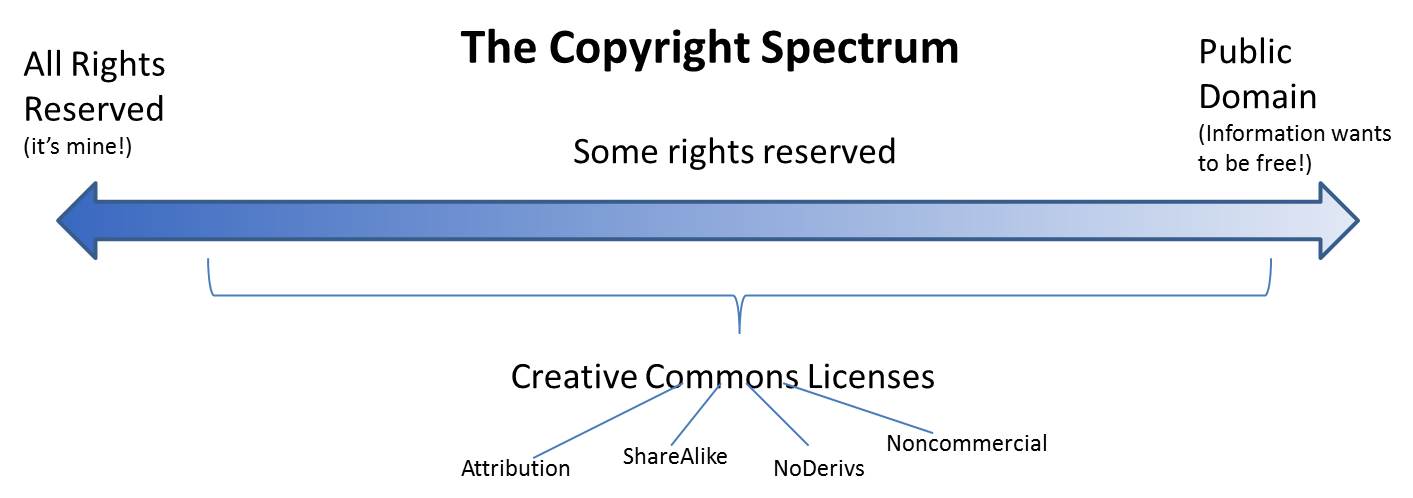We want the services that we use on the web to protect our privacy and our interests and be upfront about what they are doing with our personal data. We get irritated and angry when they do something inappropriate or underhanded. Turning that idea around, how do you treat the things that others have put up on the web?
Copying; that's the trouble area. We're not talking about taking a minor quote, or paraphrasing a small portion in your paper (for which you would OF COURSE provide attribution and a citation in your bibliography). That type of use is allowed. We're talking about taking the whole thing or a big chunk and re-using it. Here's what it boils down to:
IF YOU DIDN'T CREATE IT, THEN IT ISN'T YOURS.
Copying things from the web is a technological piece of cake, but is it OK? It would be easier if the answer were a straight yes or no, but it's not that simple. There are really two ideas at work here. The first is the actual copying, and the second is whether you present what you've copied as if you created it.
The second idea is a no-brainer no-go. If you use what you copy in a way that implies that it is your own work you are STEALING. This type of activity is called plagiarism and is completely unacceptable. There is a plagiarism section in the Scholarly Research Tutorial which covers this general idea and which you must understand (the goofy video from Norway at the bottom is a good introduction). Even if it is OK to copy the material, it still isn't yours and you still have to give credit to the original creator.
The first idea is more complex. When someone produces a creative work (e.g. an image, a poem, a book, a web page), they AUTOMATICALLY have a form of legal protection called copyright. It doesn't have to be published. It doesn't have to be formally presented. It doesn't have to be registered anywhere. They created it, and it is their "intellectual property" and they get to decide how it is reproduced and used by others.
Where it gets complicated is in the levels of permission that allow intellectual property to be copied and used.

| All Rights Reserved | Creator retains complete copyright. They have complete control over their work (there are a few exceptions called "Fair Use"). If you want to copy and use something that has complete copyright protection, you have to get permission from the copyright holder. |
| Some Rights Reserved | You can copy and use the work as long as you follow some restrictions. A group called Creative Commons is trying to make this easier for people in the digital environment by standardizing the licensing/labeling that tells you what the restrictions are. |
| Public Domain | Automatically OK to copy. You can change and adjust and use them in any way, but you still have to give credit to the original source. Any creator can declare their work to be in the public domain and basically give away their rights to the work. |
Let's look at this tutorial as an example. There are numerous graphics included from other sources. We searched explicitly for those with creative commons licensing that would allow us to use them here. All have attribution and/or live links. In places where we had to seek permission from the copyright holder to use/adapt something, we state that in a footnote. We did that because we didn't create it, so it isn't ours and we can't pretend like it is. The few graphics without attribution are, in fact, ours (such as the one above the table on this page). If you wanted to copy and use it, you would have to seek our permission.
Before you think this is just an academic issue, here are three cases where plagiarism had serious, real-world consequences:
So now you know how plagiarism looks and you won't plagiarize, because, well, YOU know better.
End of Module 5